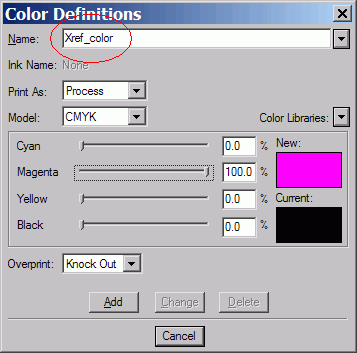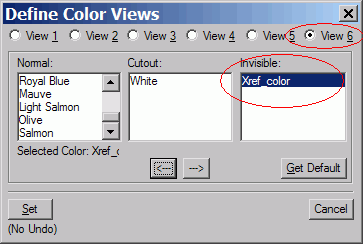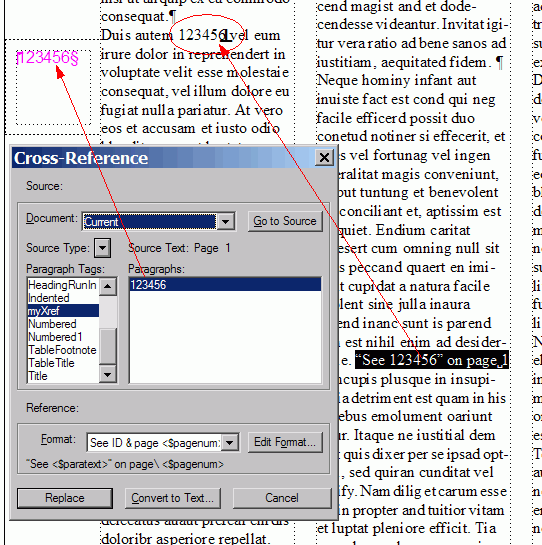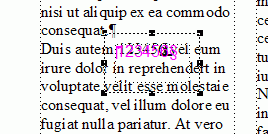 Adobe Community
Adobe Community
- Home
- FrameMaker
- Discussions
- Re: How can I link to a marker (and display the ma...
- Re: How can I link to a marker (and display the ma...
How can I link to a marker (and display the marker content)?

Copy link to clipboard
Copied
Hi all,
I have a marker in my text containung a text string (e.g. an ID number). I tried to create a cross-ref format that allows me to link to the marker. But if I insert the paragraph text placeholder, then the cross-ref displays the entire paragraph in which the marker is placed, not just the marker text. Which placeholder would I need to use to display only the marker?
Copy link to clipboard
Copied
I have a marker in my text containing a text string (e.g. an ID number). I tried to create a cross-ref format that allows me to link to the marker.
Do you need hypertext linking to the source instance of the ID number?
If not (and you are just doing a define-once, clone everwhere else), then ...
It's been a while since I looked into this, but the conclusion I recall coming to was that:
a. There's no construct for a format of $markertextonly
(as of 7.1 anyway), and
b. You can't use Index markers, or create A CustomMarkerType,
because Cross-Reference only lists markers of type Cross-Ref.
Presumably there are aftermarket tools ... anyway ...
What I do is:
- For small numbers of such objects, put the text in variables. Use variables everywhere the text needs to appear. Text generated by variables, of course, gets no hypertext link.
- For larger numbers of such objects, put them in a table on a Reference page. You can even give them a unique paragraph format to make them easy to Xref by paragraph tag. Text generated by Xref to RefPage does get a hypertext link, but it goes nowhere.
If a hyperlink to the source instance is required, I've also used run-in paragraph types to isolate the text string to its own paragraph. I've done this for glossaries, for example, where the lead word/phrase is the text to be cloned, and all Xrefs to it then are also hypertext links to that entry in the Glossary.
_________
I'd be delighted to be mistaken.

Copy link to clipboard
Copied
Thanks for the ideas, actually I have already been using parts lists etc. on the reference pages (easy to copy between documents) but in this case an actual link would have been required. I will file a feature request.
Copy link to clipboard
Copied
Robert,
There is a technique to make the type of cross-reference that you want, i.e. a link to a unique string instead of the entire paragraph of text.
You need to go about it in a round about manner using FM's Views with an invisible colour.
1. Create a custom colour, e.g. Xref_color, for the text that you want to make a cross-ref to. Note: it can be any colour that you want as it will never be output.

2. Now go to your Color Views; View > Color > Views... and set View 6 to have this new colour moved to the Invisible column.

3. Create a new paratag, e.g. myXref, for text to be entered using the new colour.

3. Now at the location that you want to make the cross-ref to (e.g. an Id number referenced in a paragraph), drop in an anchored frame using either outside column or outside text frame (as these locations do not repel text) and then insert a text frame within that anchored frame. Using the new paratag, enter the ID number inside the Aframe text box.

4. From the location that you want the xref, insert your xref format and use the myXref paratag as the target.
5. If you want the cross-ref link to take you to exactly the location of the ID in the text, then move the anchored frame over top of the text in the paragraph, ie.

5. When you want to output your results change the View back to #1 (either through the View panel or use the shortcut esc v 1 to toggle) and the paragraph content for the myXref tag will disappear from view. However, FM still knows it's there and can access the content. When you create a PDF, the link will behave as if you directly linked to the content inside of the paragraph.

To make inserting the Aframe properly set-up easier, create one with the text frame and paratag on the Reference page so that you can copy and paste as required.
You can use this technique to mimic the <$marker1> <$marker2> behaviour in running h/f 's if you run out of markers as well.
Note: You can toggle colour views at the Book level for all documents at once. Using the keyboard shortcuts, it's a snap.
I hope this technique helps.
Copy link to clipboard
Copied
Another technique I haved used is a bit less trouble than the invisible text overlay trick, but you'd probably only want to do it for small numbers of objects, unless you don't mind polluting the Cross-Reference format namespaces. Suppose we have a paragraph:
Lorem ipsum dolor sit amet, consectetur adipisicing word123 elit, sed do eiusmod tempor incididunt ut labore ...
At "word123" insert a Marker of type Cross-Ref, named "word123 key".
Everywhere else you need to hypertext back to that, insert a Cross-Reference,
to Marker "word123 key"
of Format Name: "word123 xref"
of Format Definition "word123"
(literal text, no quotes. no constructs, unless you need some set-off).
All but the key instance of word123 become atomic objects hyperlinked to the marker at the key instance.
________
I use this for page nav in the margins. Marker format "Cover" appears as "Cover", but goes to the document title on the cover page, regardless of the content of that text string.

Copy link to clipboard
Copied
Thanks for the ideas lads. I will discuss them and we may use the invisible color trick a few times, but I think that both manually inserting text boxes and re-writing the target text, as well as using literal text in cross-ref definitions will be too unflexible for a wider use.
I filed a feature request using the whishform (https://www.adobe.com/cfusion/mmform/index.cfm?name=wishform).
What we would need is a possibility to link to an atomic text using a standardized, easy method and to update this link when changes occur.
Copy link to clipboard
Copied
Has anyone found a more elegant solution to displaying the marker text in a cross-reference? (like we can do using Running Header/Footers)
-Matt
Copy link to clipboard
Copied
This item has been on the wishlists for a very long time. ![]()
AFAIK, there is no simple, elegant way to do this, as there is no building block for marker content, except for the running h/f content (which can only be used on Master pages).
Copy link to clipboard
Copied
Another technique I have used is a bit less trouble than the invisible text overlay trick, but you'd probably only want to do it for small numbers of objects, unless you don't mind polluting the Cross-Reference format namespaces.
Another hack-of-the-day technique is similar, as long as you don't mind polluting the hidden Paragraph Catalog.
Suppose we want all instances of a some term (say, "amet") to be text strings defined by some key instance of the term (or arbitrary string), and we want the clones to hyperlink to the defining instance. We can't use a normal Xref, because it won't allow us to reference just a subset of a paragraph, just a whole pgf <$paratext>. This hack uses <$paratag> instead.
Defining instance of amet is in this paragraph:
Lorem ipsum dolor sit amet, consectetur adipisicing elit, sed do eiusmod tempor incididunt ut labore ...
We give this paragraph a unique pfg fmt: "amet" (or give it the name of the desired arbitrary string).
A typical reference to it might be a paragraph like:
If your widget has the amet option ...
We want this "amet" to be an Xref object, controlled by and linked to the definining instance.
Here, and where else we need to use that term, we use an Xref to paragraph format "amet".
Name: Defining Instance
Definition: <$paratag>
Although we suffer multiple paragraph formats, only one Xref format needs to be created. The first use of this format with each new defining instance creates a unique Xref marker at the start of the defining paragraph. You never type "amet" again. Additional uses of the term are the same Xref. Change the name of the defining paragraph format, and you update all Xrefs to it.
For extra credit, you can move the defining instance marker for start of pgf to the start of the defining term for more precise hypernav (plus an alert to the maintainer that the marker might be unusual).
To minimize visible catalog pollution, delete format amet, and other unique formats after making each initial Xref. The Xref dialog can still find it.
______
If I ever have the need for this type of Xref, however, I'll probably use the suggestion made by Arnis, in an outside-of-text-frame anchored frame. Having a <$markertext> construct would, of course, be much nicer.
Copy link to clipboard
Copied
Another hack-of-the day technique is to use run-in formats. This hack is just for the case where we want to xref to a word or string in a target para, and have that word or string appear where referenced, and be a hyperlink. This doesn't cover the case where we want a different word or string to appear where referenced.
As in the earlier examples, suppose we want to cross-ref, by word or text snippet, to "amet" in a paragraph nominally of format Body:
Lorem ipsum dolor sit amet, consectetur adipisicing elit, sed do eiusmod tempor incididunt ut labore ...
Create two new formats:
Body.Start
String.Xref
Both of these are identical to normal Body except for:
Properties: Pagination
<*> Run-In Head - - Default Punctuation [ <none> ]
Author the paragraph in Body, then apply Body.Start to "Lorem ipsum dolor sit ", and String.Xref to "amet".
Now you can cross-reference, by
Source Type: Paragraph Tags: [String.Xref]
Format: <$paratext>

